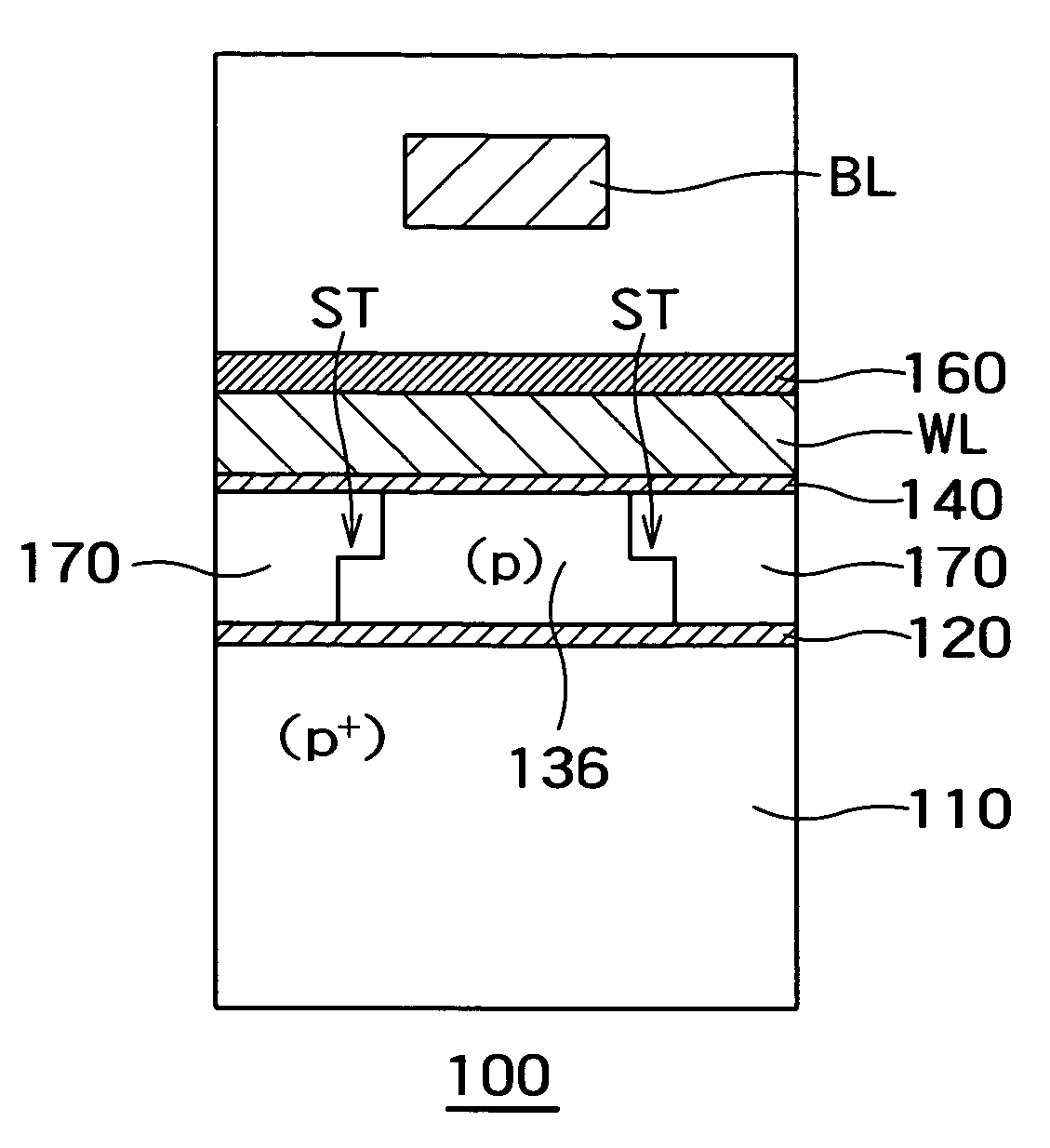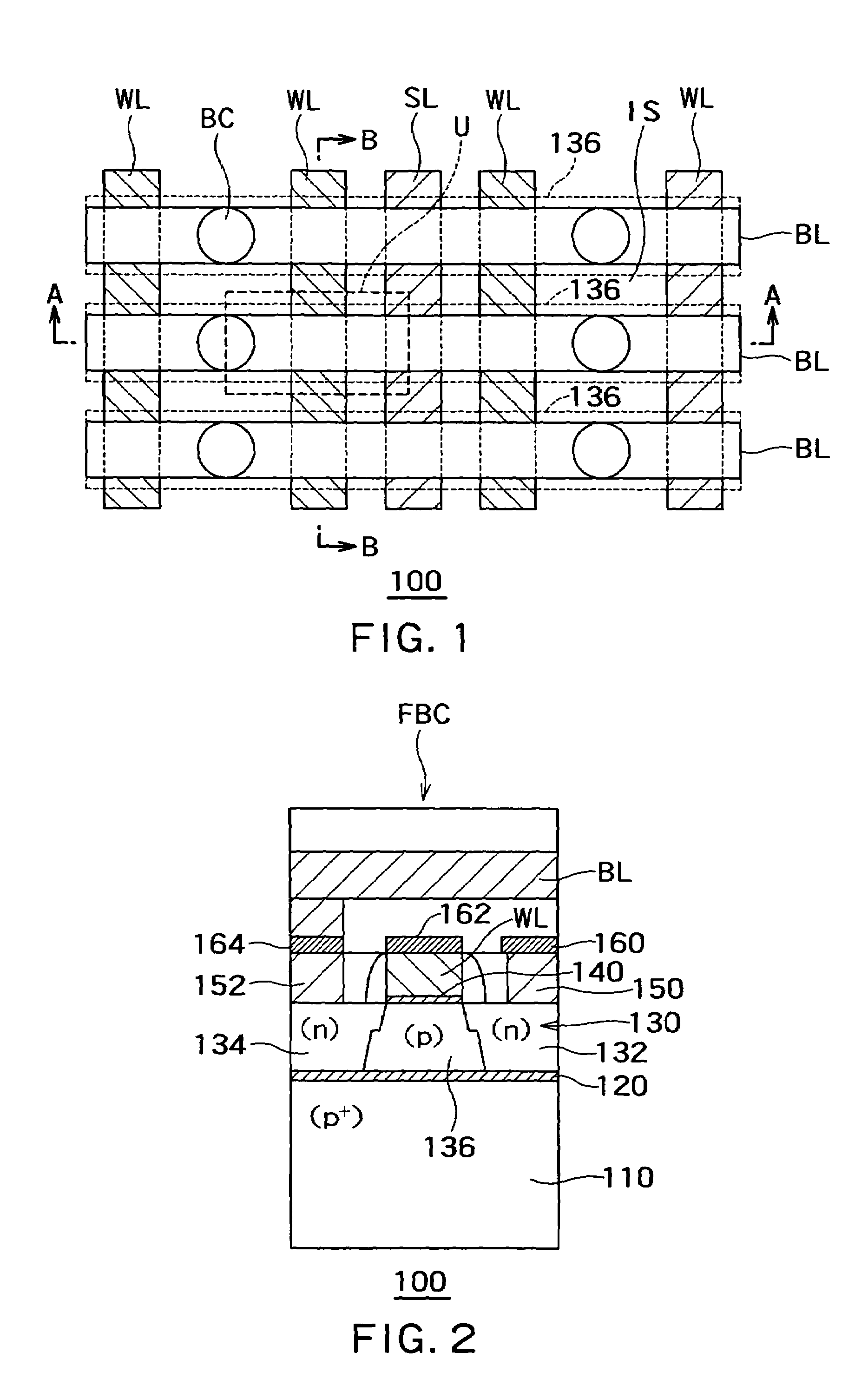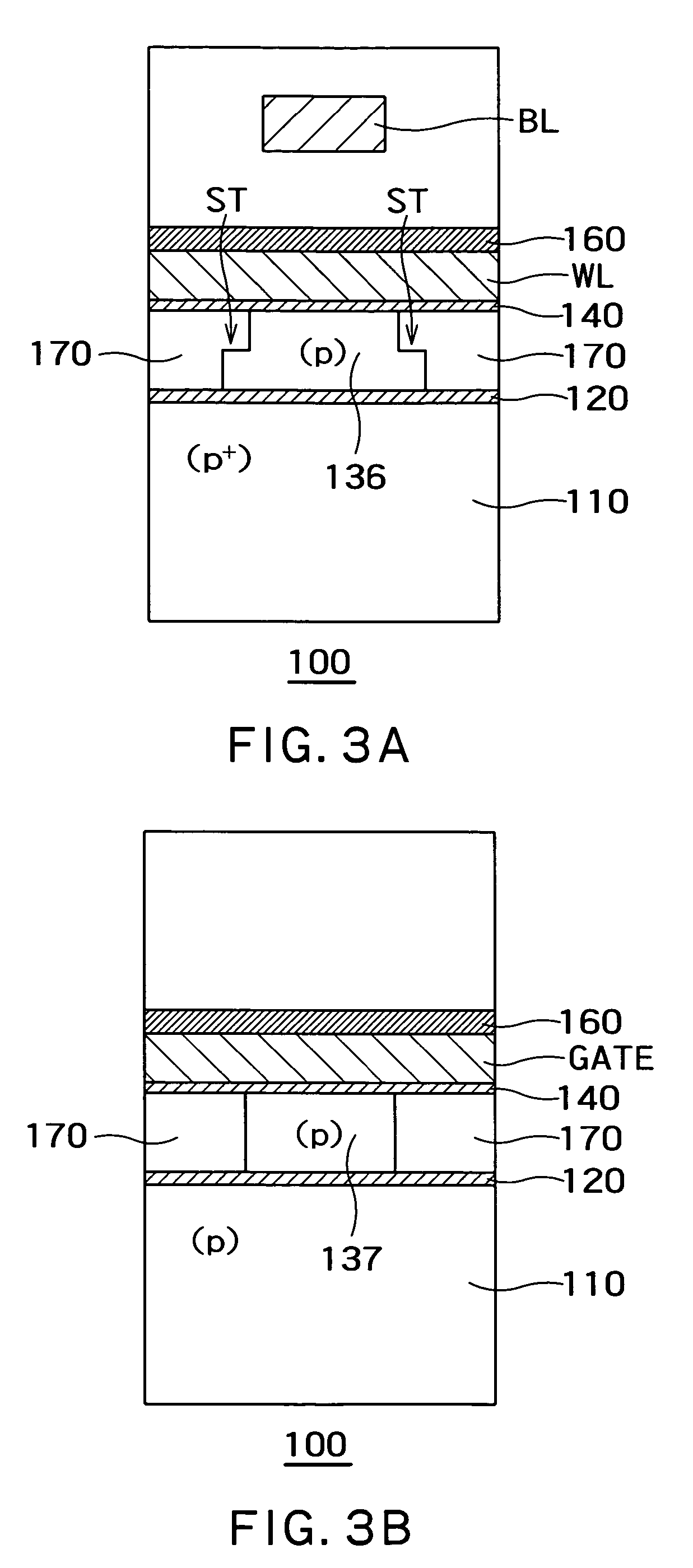Floating body cell dynamic random access memory with optimized body geometry
a floating body cell and random access memory technology, applied in the direction of semiconductor devices, electrical equipment, transistors, etc., can solve the problems of reducing the speed of peripheral circuits and logic circuits, scaling limitations of drams, and increasing manufacturing costs
- Summary
- Abstract
- Description
- Claims
- Application Information
AI Technical Summary
Benefits of technology
Problems solved by technology
Method used
Image
Examples
first embodiment
[0036]FIG. 1 is a plan view of DRAM 100 according to the first embodiment of the invention. In this embodiment, a peripheral circuit for controlling the DRAM 100 may be provided around the DRAM 100. The DRAM 100 includes word lines WL, bit lines BL and source lines SL. The word lines WL and the source lines SL extend approximately in parallel whereas the bit lines BL extend in directions approximately perpendicular to the word lines WL and the source lines SL. Bit contacts BC make electrical connection between the bit lines BL and the drain regions below the bit lines BL (see FIG. 2).
[0037]FIG. 2 is a cross-sectional view of a unit cell U taken along the A—A line of FIG. 1. Fig. 3A is a cross-sectional view of the unit cell U taken along the B—B line of FIG. 1, and FIG. 3B is a cross-sectional view of a peripheral logic circuit. First referring to FIG. 2, the DRAM 100 further includes a BOX layer 120, an SOI layer 130, and a p+type semiconductor substrate having impurity concentrati...
second embodiment
[0074]FIG. 15 is a plan view of DRAM 300 according to the second embodiment of the invention. Configuration of body regions 336 of the second embodiment is different from that of the body regions 136 in the first embodiment. The body regions 336 do not have steps ST (see FIG. 3A) on their sidewalls in the regions corresponding to bit line contacts BC. In the other regions not corresponding to the bit line contacts BC, the body regions 336 have steps on their sidewalls. The other components of the second embodiment may be identical to corresponding components of the first embodiment.
[0075]A cross-sectional view of a unit cell U shown in FIG. 15 taken along a bit line (A—A line) appears identically to FIG. 2, and a cross-sectional of the unit cell U taken along a word line WL (B—B line) appears identically to FIG. 3A. However, a cross-sectional view taken along a portion of bit line contacts BC (C—C line) appears differently from the first embodiment.
[0076]FIG. 16 is the cross-section...
PUM
 Login to View More
Login to View More Abstract
Description
Claims
Application Information
 Login to View More
Login to View More - R&D
- Intellectual Property
- Life Sciences
- Materials
- Tech Scout
- Unparalleled Data Quality
- Higher Quality Content
- 60% Fewer Hallucinations
Browse by: Latest US Patents, China's latest patents, Technical Efficacy Thesaurus, Application Domain, Technology Topic, Popular Technical Reports.
© 2025 PatSnap. All rights reserved.Legal|Privacy policy|Modern Slavery Act Transparency Statement|Sitemap|About US| Contact US: help@patsnap.com



